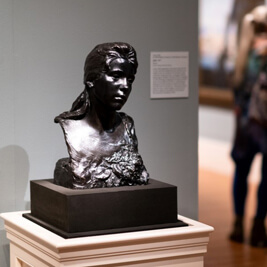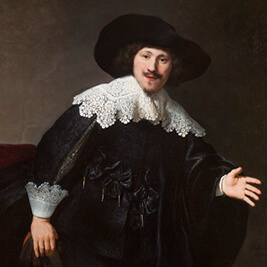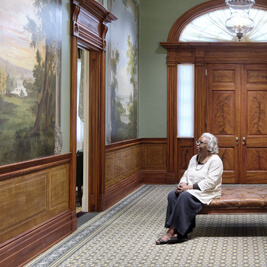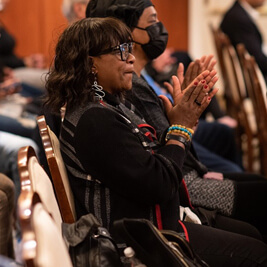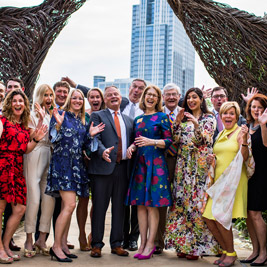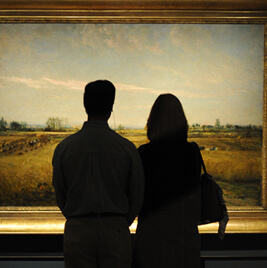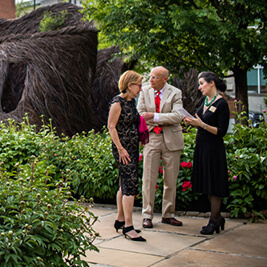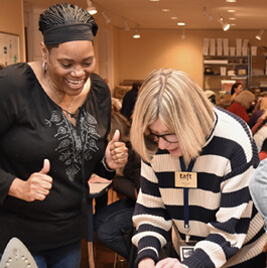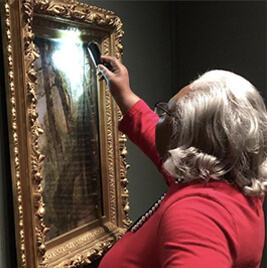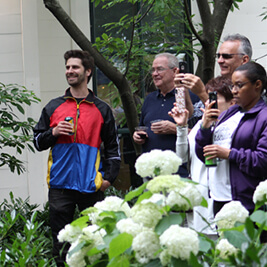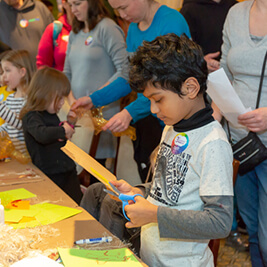- Do + See
- Dine + Host
- Give + Join
- Educate + Learn
Conversation with the Collectors
by Tamera Lenz Muente, Curator
The special exhibition Memories & Inspiration features selections from the private collection of Kerry and C. Betty Davis. Here, the Davises share some thoughts with Taft Museum of Art Curator Tamera Lenz Muente.
Tamera Lenz Muente: How and when did you begin to collect art?
Kerry Davis: I started buying art in the mid-1980s to decorate my first home. I never considered myself a collector early on—I was just buying works that pleased me. It was much later, in retrospect, that someone brought to my attention that I had assembled a cohesive body of work.
TLM: It has been noted that you collect art because of your desire to preserve cultural memories and to inspire your community. Can you elaborate on that a bit?
KD: I do have a desire to preserve these works of art created by people from the African diaspora. Many of the images reflect a sense of pride and document who we are as a people. I have a custodial responsibility to preserve these images for future generations. I also believe art is to be seen. Along our collecting journey, we have shared not only the works of art, but the artists who created them, with friends, family, parishioners, neighbors, and the community at large so they, too, can experience the myriad of emotions that these works evoke.
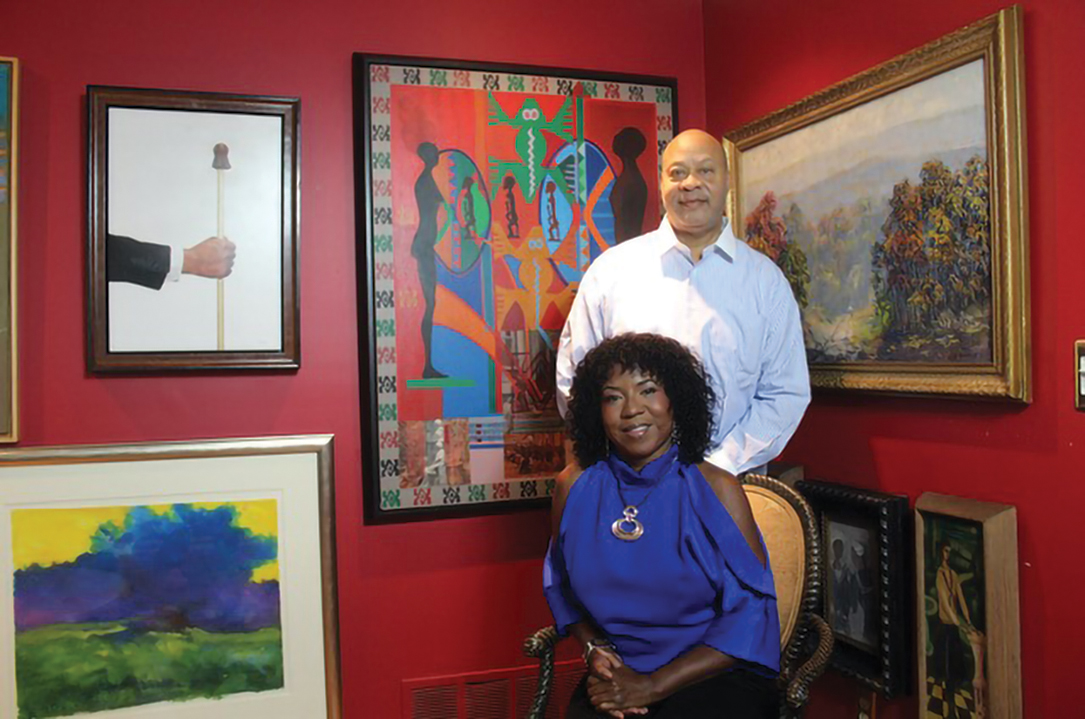
Kerry and C. Betty Davis
TLM: Tell me about your relationships with the artists in your collection. Do you have a favorite interaction you’d like to share?
KD: I know, and have known, many artists along this journey. I remember being so intimidated by how to approach artists that I read about in books or saw in the media. To me, they seemed larger than life and unapproachable. It was the advice of my good friend, the late Mildred Thompson, that gave me the confidence that I carry even today. She said, “If these people are as great as you think they are, they will be approachable. Greatness is always approachable.” Since that day, I’ve never had any hesitation or reservation about approaching anyone for any reason.
C. Betty Davis: One of my greatest joys of collecting is when we are graced with the opportunity to visit with artists in their homes, studios, or when they come to our home. During a trip to Philly, we visited with Moe Brooker, a renowned African American abstract artist, educator, and printmaker (see middle). We walked into a studio to the sound of jazz playing while Brooker painted. During our conversation, he shared two factors that have impacted his artistry: jazz and going to church. He said, “There is something important about rhythms and sounds that are relative to color that is very much part of the Black artist community.”
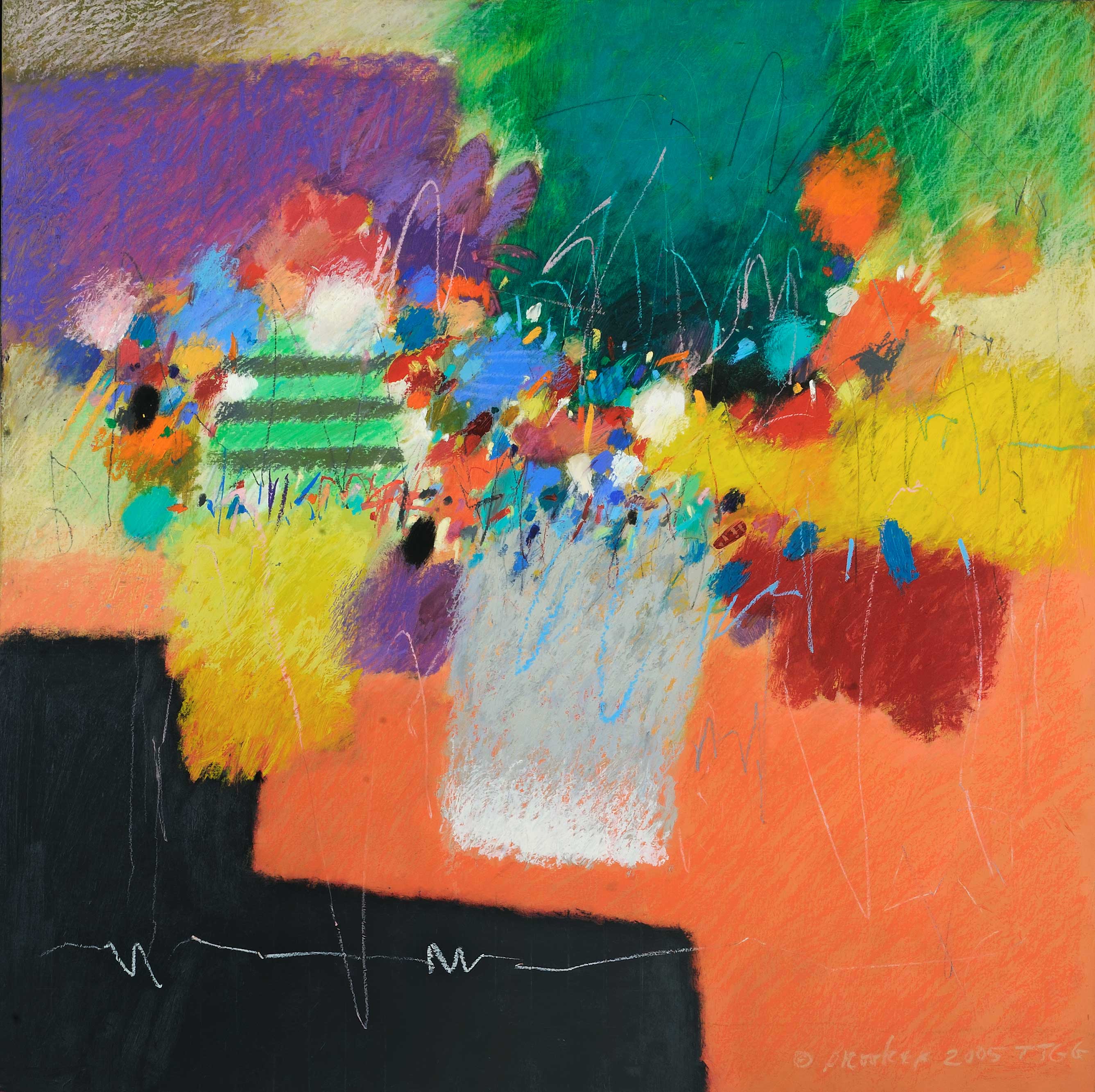
Moe Brooker, Listen with your eyes, 2005, mixed media on board. Photo by Greg Staley, © Moe Brooker
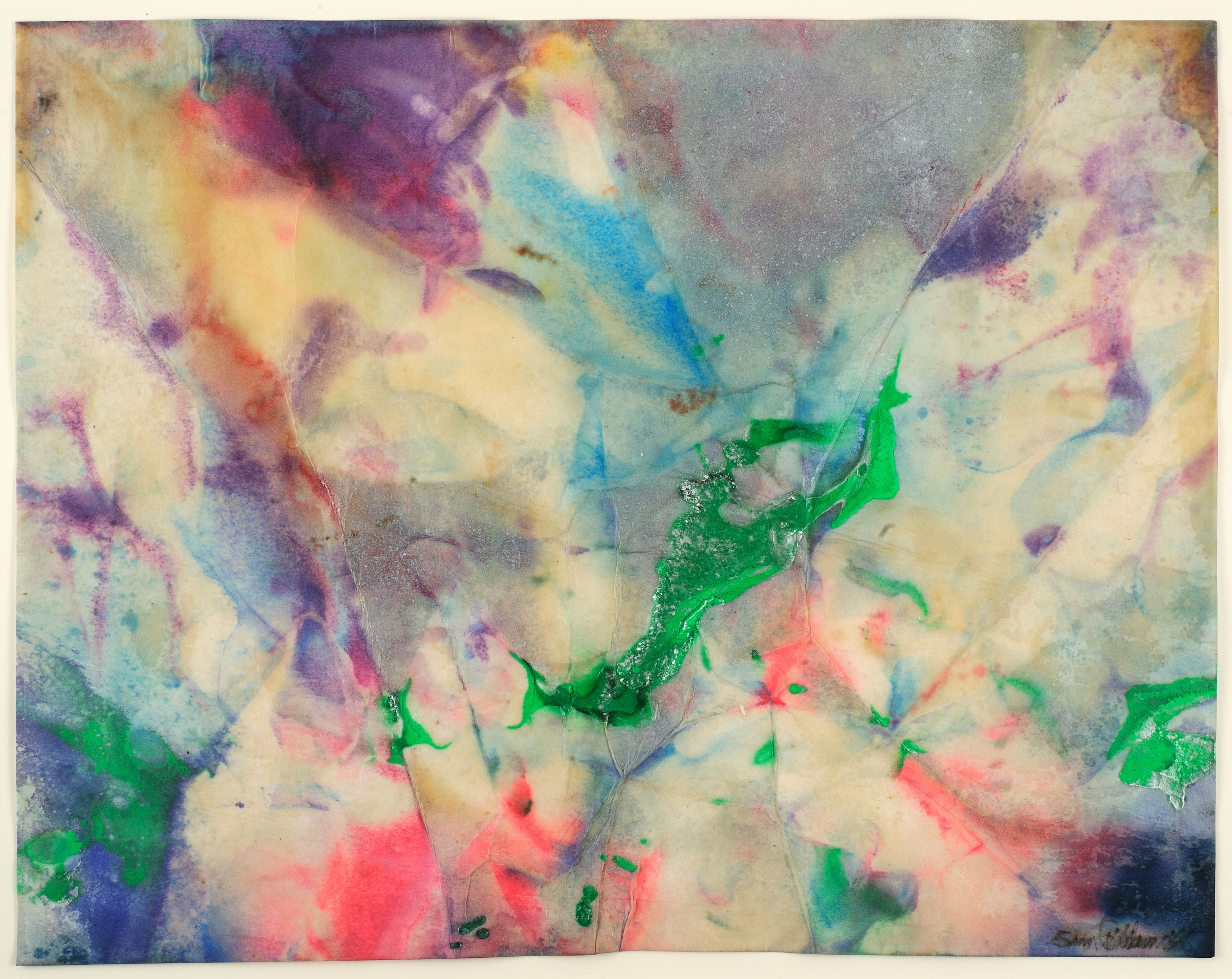
Sam Gilliam, Untitled (detail), 1974, oil acrylic on rice paper. Photo by Gregory Staley, Courtesy of David Kordansky Gallery, Los Angeles, CA, © Sam Gilliam
Many years ago, we spent time with another great African American painter and lyrical abstractionist, Sam Gilliam. This was one of life’s greater pleasures. Engaging with Gilliam in his Washington, DC, studio was like being in an orchestra environment, where some pieces could be as simple and beautiful as a flute solo and as complex as the awe-inspiring sound of the full-bodied orchestra. Gilliam‘s works are rich and colorful with texture and movement. We acquired a 1974 painting during that unforgettable visit (see above, right), and he also gifted us a beautiful print.
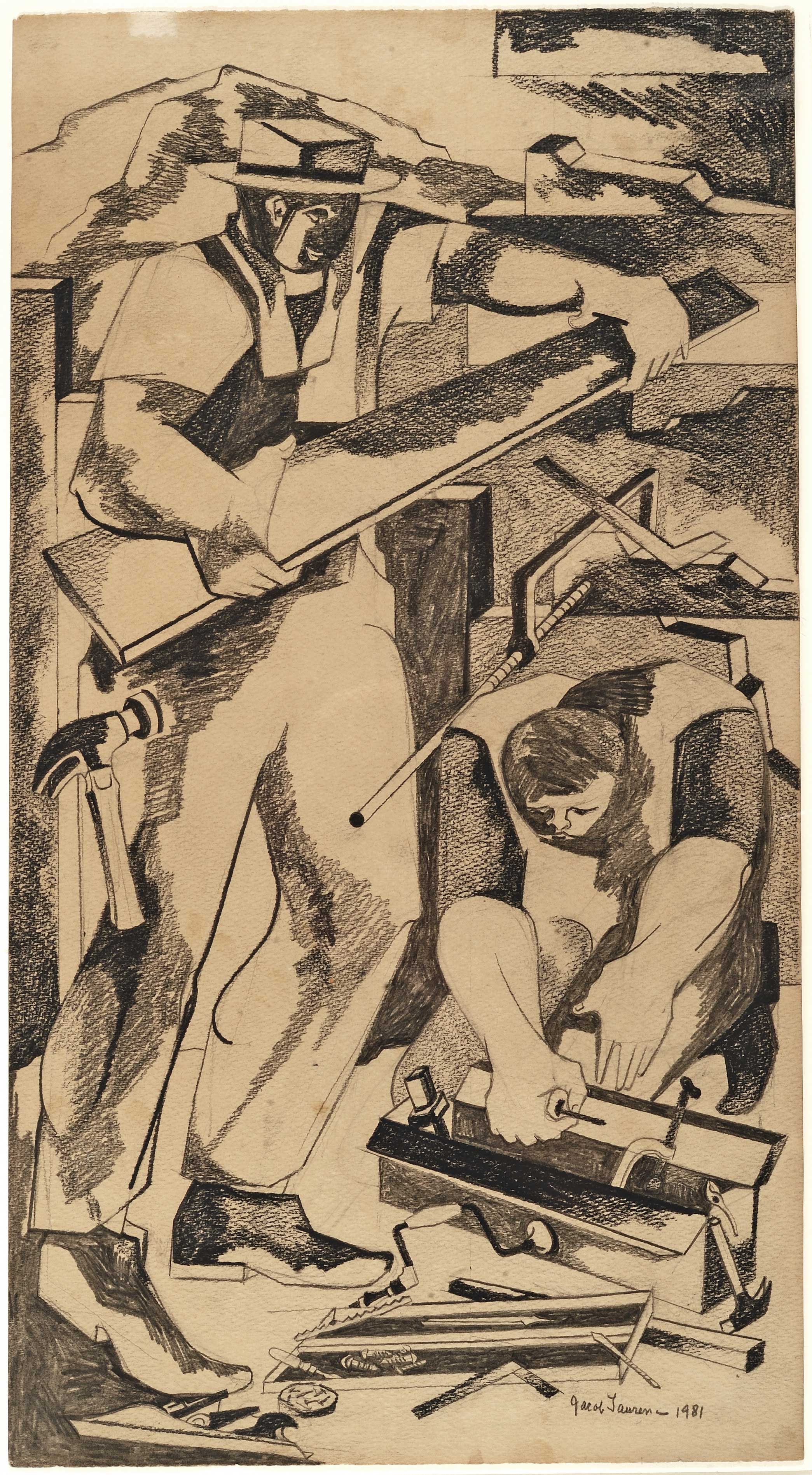
Jacob Lawrence, Builder Series #8, 1981, graphite. Photo by Gregory Staley, © 2022 The Jacob and Gwendolyn Knight Lawrence Foundation, Seattle / Artists Rights Society (ARS), New York
TLM: Can you describe how it feels to live with these works in your own home?
CBD: Some days, it feels like a museum. Each room carries its own theme which is thought-provoking, and when our works are traveling, I miss them. Art sets the stage in our home. It connects us with our ancestors and breathes inspiration, imagination, and an appreciation for those gifted creatives, some who have passed and others who are still with us today.
KD: I can’t imagine living without art. When I walk through our home, I don’t just see pictures on a wall. I see friends, memories, and experiences. We have/had relationships with most of the artists whose work is in the collection. The Jacob Lawrence drawing (left) is my most coveted work. I purchased it after my mother passed. I had worked as a carpenter for a short period but was always a handyman. I was my mother’s handyman, and that particular work honors our relationship. It was the narrative paintings of Lawrence that got me interested in art.
TLM: Most people assume that you need to be extraordinarily wealthy to collect art. If someone asked you for advice on how to begin their own art collection, what would you tell them?
KD: I would say, “Get out and look.” Go to museums, galleries, neighborhood art centers, art fairs, internet, Instagram, university galleries, etc. Talk to others who buy art. There are several books that you can reference on art, artists, and collecting. First, buy what you like, then at some point educate that “Like.” Collecting doesn’t have to be expensive. There are several talented artists working today. Educate your eye and discover the next famous artist. Just have fun. Art is subjective: if you think it’s great, enjoy it.

